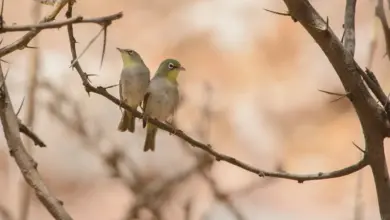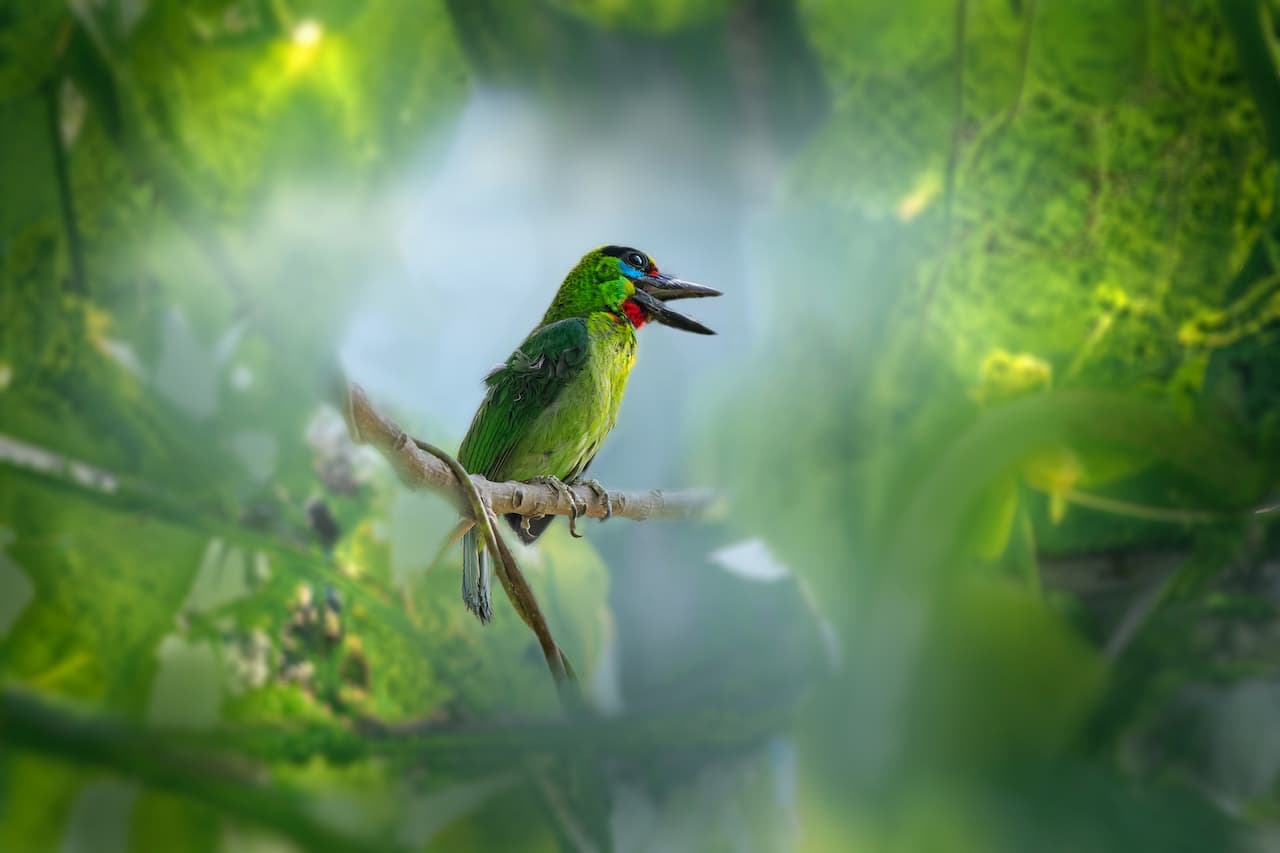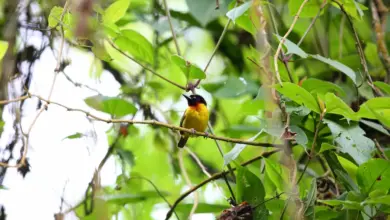Long-tailed Silky-flycatchers
Long-tailed Silky-flycatchers (Ptilogonys caudatus)
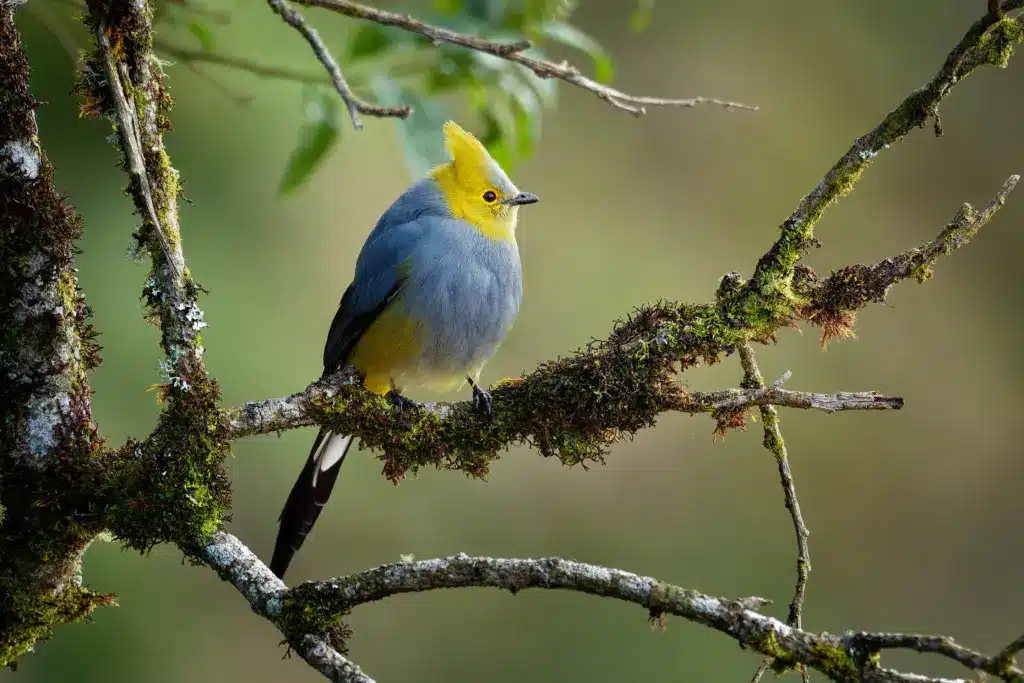
Distribution / Range
It occurs only in the mountains of Costa Rica and western Panama, usually from 1,850 m altitude to the timberline. Long-tailed Silky-flycatchers often perch prominently on highly exposed twigs.
Description
The male Long-tailed Silky-flycatcher is 24 cm long and has a pale grey forehead. It is a thrush-sized species weighing about 37 g. The rest of the crested head, neck, throat, and lower belly are yellow. The back, lower breast, and upper belly are blue-grey, and the flight feathers and long pointed tail are black. The outer tail feathers are spotted with white.
The female is 21 cm long and generally duller than the male, with a darker grey forehead, olive body plumage, and a shorter, duller black tail. Immatures are similar to the adults, but the central tail feathers are shorter and the white spotting on the outer tail is indistinct.
Diet
This species forages in small flocks when not breeding, flycatching for insects, or taking small fruits, especially mistletoe.
Berries, any small insects, fruits, and vegetables.
Phainopepla have a specialized mechanism in their gizzard that shucks berry skins off the fruit and packs the skins separately from the rest of the fruit into the intestines for more efficient digestion. So far this is the only known bird able to do this.
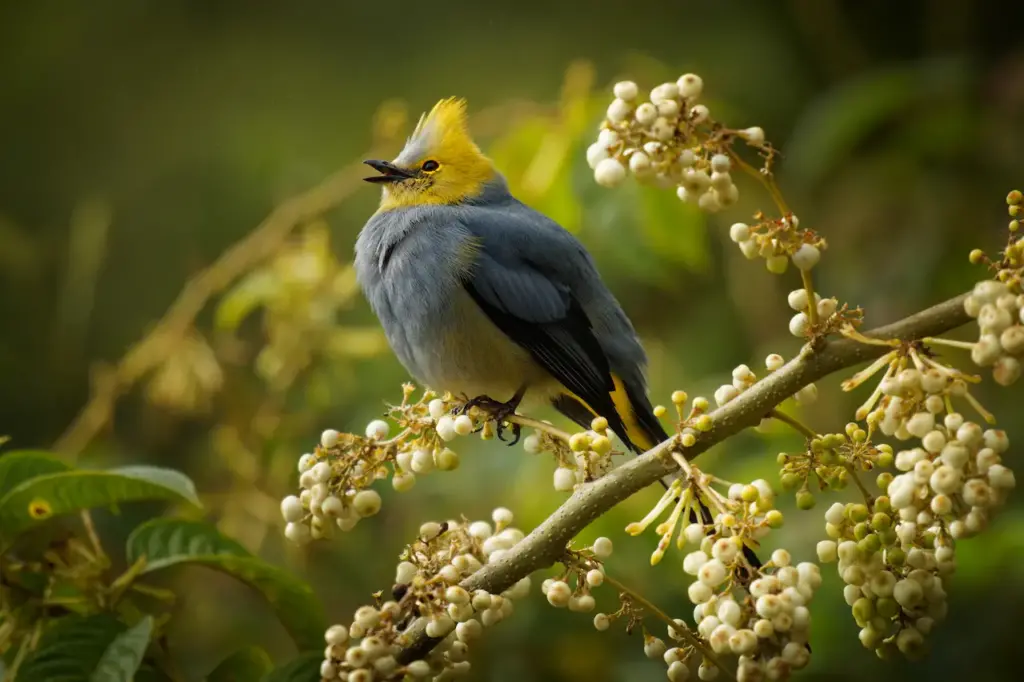
Reproduction
The habitat of this bird is mountain forests, where the breeding pair builds a neat cup of lichen 2-18 m high in a tree, sometimes in loose colonies. It nests in the spring.
The female lays two brown and lilac-blotched grey eggs, and the incubation, done by both the male and female, takes fifteen days.
The young fledge 18-25 days after hatching, and are fed by both parents.
Calls / Vocalizations
The call of the Long-tailed Silky-flycatcher is a repeated chee-chip.
Phainopeplas have been found to imitate the calls of twelve other species, such as the Red-tailed Hawk (Buteo lineatus), and the Northern Flicker (Colaptes auratus).
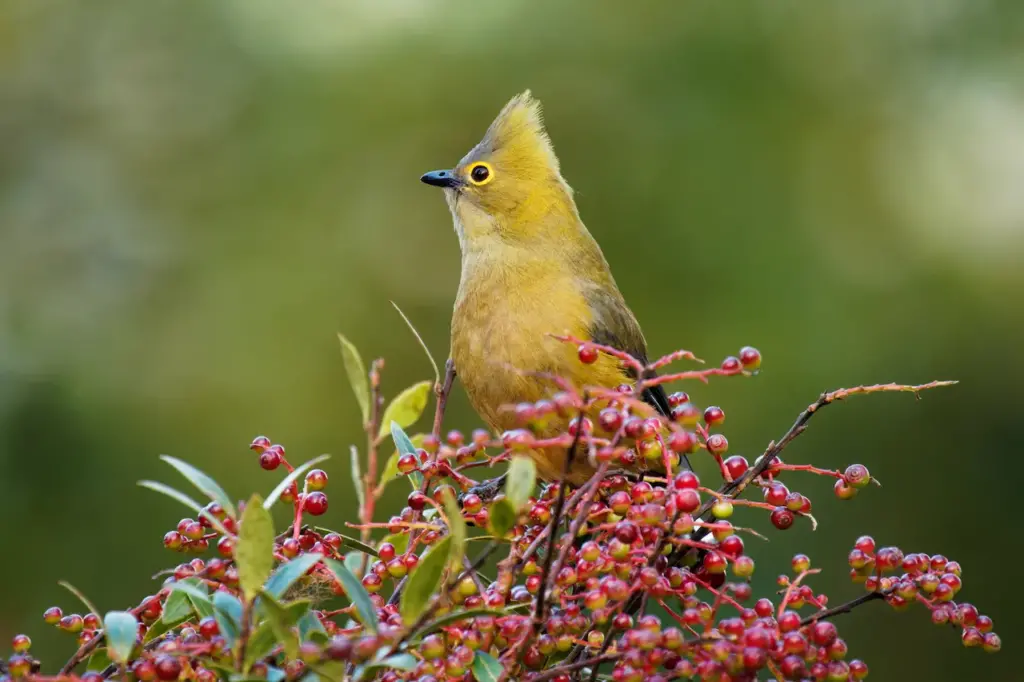
Miscellaneous
- This species is a host to the biting louse Brueelia ptiliogonis.
Copyright: Wikipedia. This article is licensed under the GNU Free Documentation License. It uses material from Wikipedia.org … Additional information and photos added by Avianweb.
Please Note: The articles or images on this page are the sole property of the authors or photographers. Please contact them directly concerning any copyright or licensing questions. Thank you.

